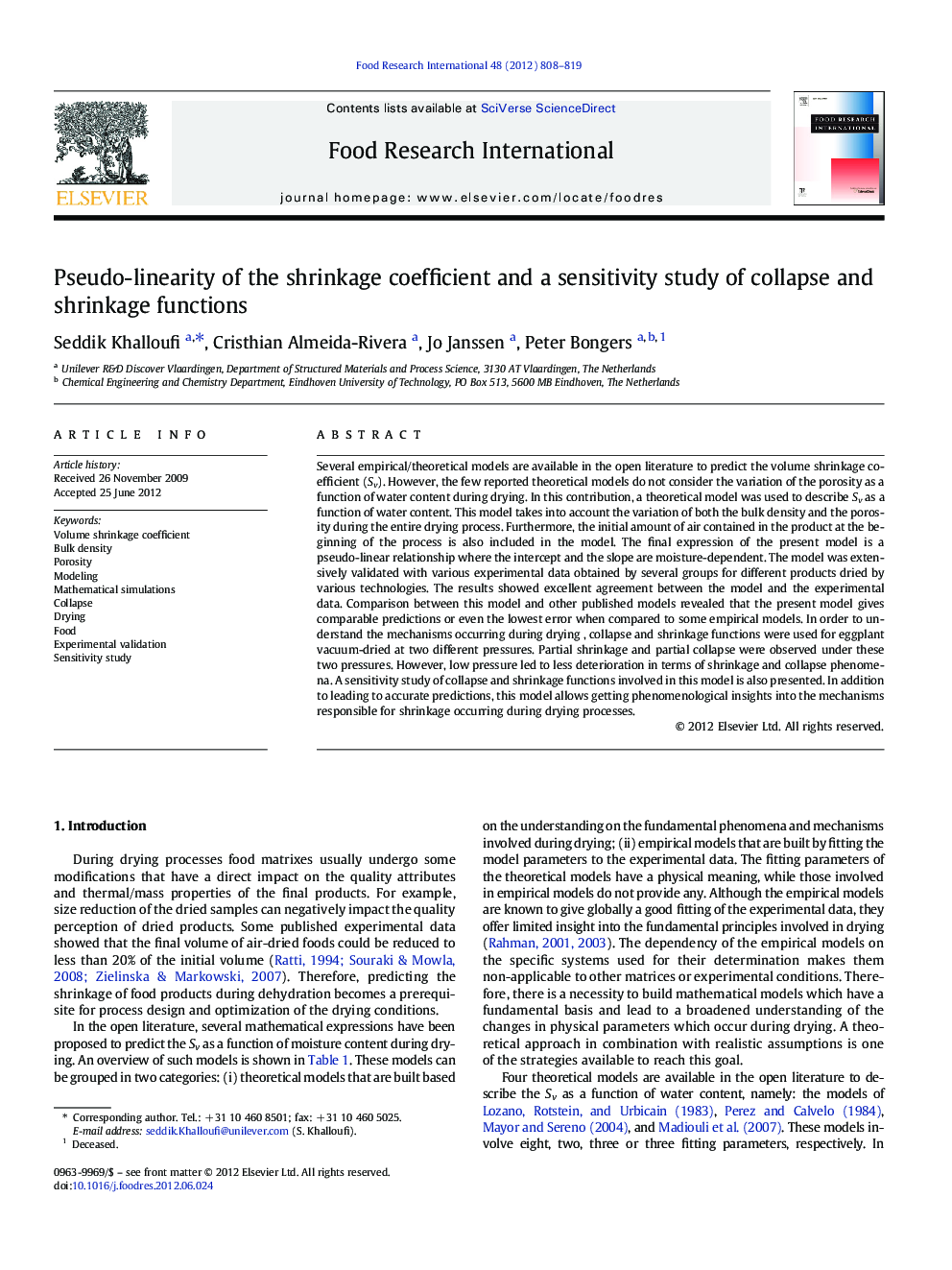| Article ID | Journal | Published Year | Pages | File Type |
|---|---|---|---|---|
| 6398730 | Food Research International | 2012 | 12 Pages |
Several empirical/theoretical models are available in the open literature to predict the volume shrinkage coefficient (Sv). However, the few reported theoretical models do not consider the variation of the porosity as a function of water content during drying. In this contribution, a theoretical model was used to describe Sv as a function of water content. This model takes into account the variation of both the bulk density and the porosity during the entire drying process. Furthermore, the initial amount of air contained in the product at the beginning of the process is also included in the model. The final expression of the present model is a pseudo-linear relationship where the intercept and the slope are moisture-dependent. The model was extensively validated with various experimental data obtained by several groups for different products dried by various technologies. The results showed excellent agreement between the model and the experimental data. Comparison between this model and other published models revealed that the present model gives comparable predictions or even the lowest error when compared to some empirical models. In order to understand the mechanisms occurring during drying , collapse and shrinkage functions were used for eggplant vacuum-dried at two different pressures. Partial shrinkage and partial collapse were observed under these two pressures. However, low pressure led to less deterioration in terms of shrinkage and collapse phenomena. A sensitivity study of collapse and shrinkage functions involved in this model is also presented. In addition to leading to accurate predictions, this model allows getting phenomenological insights into the mechanisms responsible for shrinkage occurring during drying processes.
⺠The model describes the shrinkage coefficient as a function of moisture in drying. ⺠Model provides phenomenological insights of shrinkage mechanism during drying. ⺠Shrinkage coefficient is strongly affected by initial porosity and moisture content. ⺠This model gives a smallest error when compared with the existing models.
